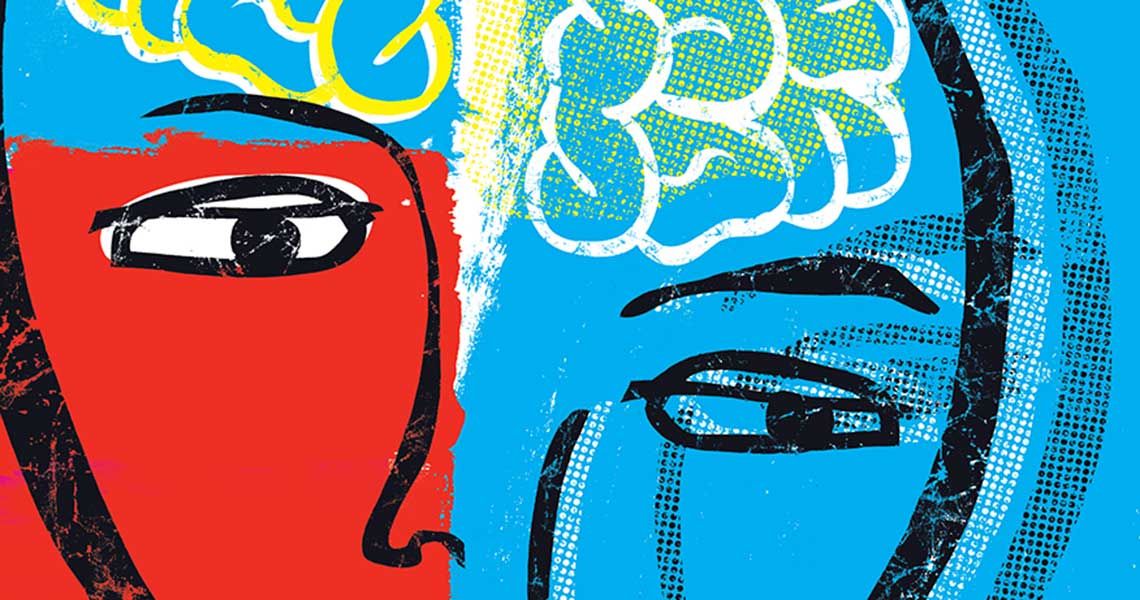The coffee has brewed, schedules have been checked, and hellos have been exchanged. Now you shift your attention to tackling the day’s tasks, but then it happens — a migraine headache strikes. It’s a soul-crushing start to the day.
Of course, for those who have never experienced a migraine, it can be tough to relate. With an average headache, one might turn to an over-the-counter remedy, such as aspirin or ibuprofen, and be in the clear in no time. But for those who suffer from migraines — approximately 12 percent of the U.S. population, according to the National Institutes of Health (NIH) — the experience can be nothing short of debilitating.
Migraines are a disorder, says Amanda Michael, MD, assistant professor of neurology at the George Washington University (GW) School of Medicine and Health Sciences (SMHS). They’re often misunderstood, which leads to a lot of pain and suffering for patients. The GW Medical Faculty Associates (MFA) Headache Center wants to be part of the solution. “We help [patients’] quality of life and have a commitment to research,” explains Michael, who, along with John Rothrock, MD, professor of neurology at SMHS, co-directs the Headache Center, which opened its doors in July 2015. “We’re building a tradition here. We’re involved in several multicenter trials, looking at efficacy and safety for multiple new medications to treat acute migraine as well as to prevent migraine in the first place.”
Rothrock believes the center is a clear asset to the community and the university, and there are four good reasons to take him at his word: Four is the number of headache centers at universities that he has previously led, including at the University of California at San Diego and the University of South Alabama.
“The Headache Center assists people with headache problems in the region and will raise the standard of care through research, providing excellent service to patients and encouraging others to do the same,” Rothrock explains. “It wants to be a voice for those dealing with this and give them strategies to feel more in control and, just as important, hopeful.”
At the heart of the center’s philosophy is the fact that the best providers of relief can be the patients themselves. “If we can educate patients to see the warning signs and teach them how to help themselves, then they can often stop the problem right in its tracks, sometimes having more effect than a member of the medical profession ever could,” Rothrock says. “It comes down to respecting our patients enough to let them have an active role. They know their bodies; they’ve often been here before. They can help us help them.”
The Research Role
Unlike many other clinical enterprises, the MFA’s center isn’t just benefiting from research — it’s at the forefront. Although Michael and Rothrock don’t do basic laboratory research, they regularly collaborate with NIH-funded scientists. “Most of what we’re doing is clinical or translational research,” Rothrock says. He adds that the center is working to expand the body of knowledge on migraines and, using that knowledge, to design more effective means of treating patients and developing new therapies. “Part of the multicenter trials are focused on experimental therapies for cluster headaches, but we are more specifically focused on migraines,” he says.
Among the topics clinicians at the Headache Center are interested in is neuropeptide CGRP, or calcitonin gene-related peptide, antagonists. Scientists believe CGRP could play a role in targeting the circuitry behind migraines.
“We are now starting the first trial at GW looking at an antagonist to calcitonin-related protein, a promising new therapy in the field of migraine medicine,” Michael says. “No one is ready to submit to the FDA yet, but all five have track records of published trials. They all are promising when you consider safety and being effective.”
Michael says the center is also trying to launch a study of transcranial magnetic stimulation (TMS) to treat migraines. TMS uses magnets to stimulate the brain’s nerve cells. Once funding is in place, the study would cover a two-week treatment period using TMS, and patients would keep monthly headache diaries about their symptoms.
The Headache Center’s philosophy of growing patient education isn’t just a hope. It’s all part of a plan to keep the patient formally rooted in the research mix. “We want to be looking at the effect on intensity of patient information on clinical outcome,” Rothrock says. “Does a better-informed patient do better clinically?”
The latter question neatly meshes with another of the center’s objectives, “Headache School,” for which its staff recently submitted a grant proposal. “We are passionate about developing this school [for] comprehensive headache education,” Michael says. “It would be a three-hour session, where patients can learn about migraines: how to treat one [while it is occurring] and how to try to prevent it from happening to begin with. It would be interactive — with probably six to eight patients suffering with migraines — and would include the aid of instruction experts in migraine and headaches overall. If patients understand better why they are having something prescribed, it helps them to take meds accordingly. It’s an important part of understanding the disorder better.”



